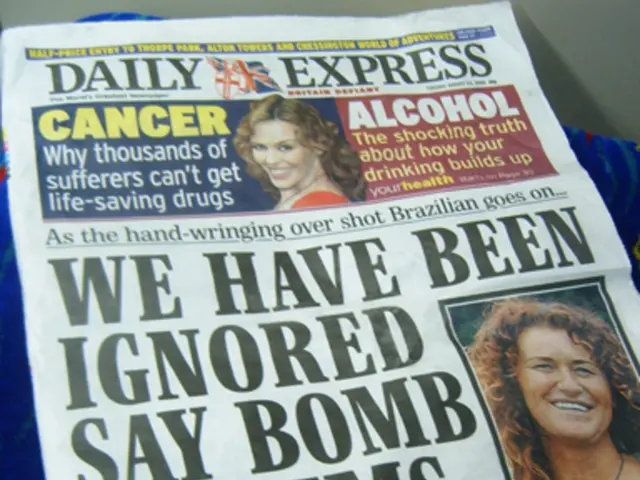Strategies for Repairing Disrupted Bonding in Mature Individuals
Healing Disorganized Attachment: A Guide to Secure Connections
Are you struggling with disorganized attachment in your relationships? Learn how to identify, understand, and overcome this common attachment style, leading to healthier, more fulfilling connections.
Disorganized attachment, a type of insecure attachment, is an emotional pattern developed in childhood and carried into adulthood. It is characterized by inconsistency and confusion in relationships, making it difficult to build secure connections with others.
To begin, assess your attachment style. Take our quiz to identify your attachment style and gain insight into your relationship patterns and tendencies.
Understanding Disorganized Attachment
Disorganized attachment is one of four attachment styles, as defined by the research of John Bowlby and Mary Ainsworth in the 1950s. Attachment theory explains the development and maintenance of human relationships based on our earliest interactions with primary caregivers.
Insecure attachment styles, including disorganized attachment, are often characterized by difficulty forming emotional connections with others due to caregivers who could not provide that connection in childhood or, in adulthood, partners with insecure attachment styles. Besides disorganized attachment, insecure attachment styles include anxious and avoidant attachment.
Anxious attachment means clinging to a partner and seeking a lot of approval, while avoidant attachment involves pulling away and feeling smothered. Disorganized attachment, a mix of the two, involves a deep yearning for love while simultaneously being fearful of abandonment, rejection, or not being worthy of love.
Secure attachment styles, on the other hand, are characterized by the ability to attach to others in a healthy way, often leading to long-term relationships and greater happiness. Emotional connection is a core need for humans, so those with secure attachment are more likely to be happier than those with insecure attachment.
The population is divided among the attachment styles in the following way:
- Secure attachment: 50%
- Anxious attachment: 20%
- Avoidant attachment: 25%
- Disorganized attachment: 5%
What Disorganized Attachment Feels Like
Those with disorganized attachment experience a mix of fear and desire for connection. They may have experienced trauma or neglect in childhood and often grew up with caregivers struggling with substance abuse or unresolved trauma.
In adulthood, disorganized attachment can manifest as confusion, volatile emotions, and a lack of stability in relationships. Individuals may see their partner as a source of safety one moment and vilify them the next, without a steady ground for their relationship. However, these individuals often possess unique strengths, such as passion, charisma, creativity, and deep compassion for others.
Healing Disorganized Attachment
Healing disorganized attachment is possible, and many have made profound changes in their lives by studying courses like Disorganized Attachment 101 and gaining self-awareness about their patterns and behaviors. Here are some tips for healing your attachment style:
- Practice self-compassion and seek supportive relationships, such as with a therapist. This can help you gain a more objective view of your inner critic and develop emotional stability in your relationships.
- Reframe your identity. Your attachment style is deeply ingrained in your identity, and healing requires shifting your perspective and approaching your identity in a new way.
- Address your attachment style holistically. Healing disorganized attachment involves addressing it on the mind, body, and spirit levels. This can include therapy, creative arts interventions, and developing a new belief system and identity that promotes increased organization, mental and emotional coherence, and a deeper experience of personal meaning and connection to the collective consciousness.
Disorganized Attachment and Dating
Disorganized attachment can negatively impact dating experiences. Those with insecure attachment styles may subconsciously sabotage relationships, have trouble forming emotional connections, or be seen as manipulative. It is crucial to recognize these patterns and work towards healing to find more fulfilling relationships.
Assess your attachment style and take the first steps towards healing. Your relationships and overall happiness are worth the effort.
[Take our quiz to discover your attachment style now!]
- Recognizing your disorganized attachment style is the first step towards healthier, more fulfilling connections in relationships.
- In relationships, those with disorganized attachment may experience inconsistency and confusion, making it difficult to build secure connections.
- Emotional connection is a core need for humans, and securing attachment styles are more likely to lead to happiness compared to insecure ones.
- Understanding disorganized attachment involves comprehending its roots in childhood experiences and the impact it can have on adulthood relationships.
- Insecure attachment, including disorganized attachment, can stem from caregivers who were unable to provide emotional connections, which can make forming such connections challenging in adulthood.
- Therapy, creative arts, self-awareness, and self-compassion can play significant roles in healing disorganized attachment and promoting secure connections and personal growth.
- Healing disorganized attachment requires an holistic approach, addressing the issue on mental, emotional, and spiritual levels to foster increased organization, coherence, and connection.
- Science and the research of John Bowlby and Mary Ainsworth have defined four attachment styles, with disorganized attachment being one of them, influencing the development and maintenance of human relationships.
- Deep compassion, passion, and charisma are the unique strengths that individuals with disorganized attachment often possess, offering a chance for personal growth and positive relationship interactions.
- Education and self-development courses focusing on Disorganized Attachment can offer valuable insight into patterns and behaviors, setting the stage for healing and improved relationships in the realm of health-and-wellness, mental-health, and lifestyle.








